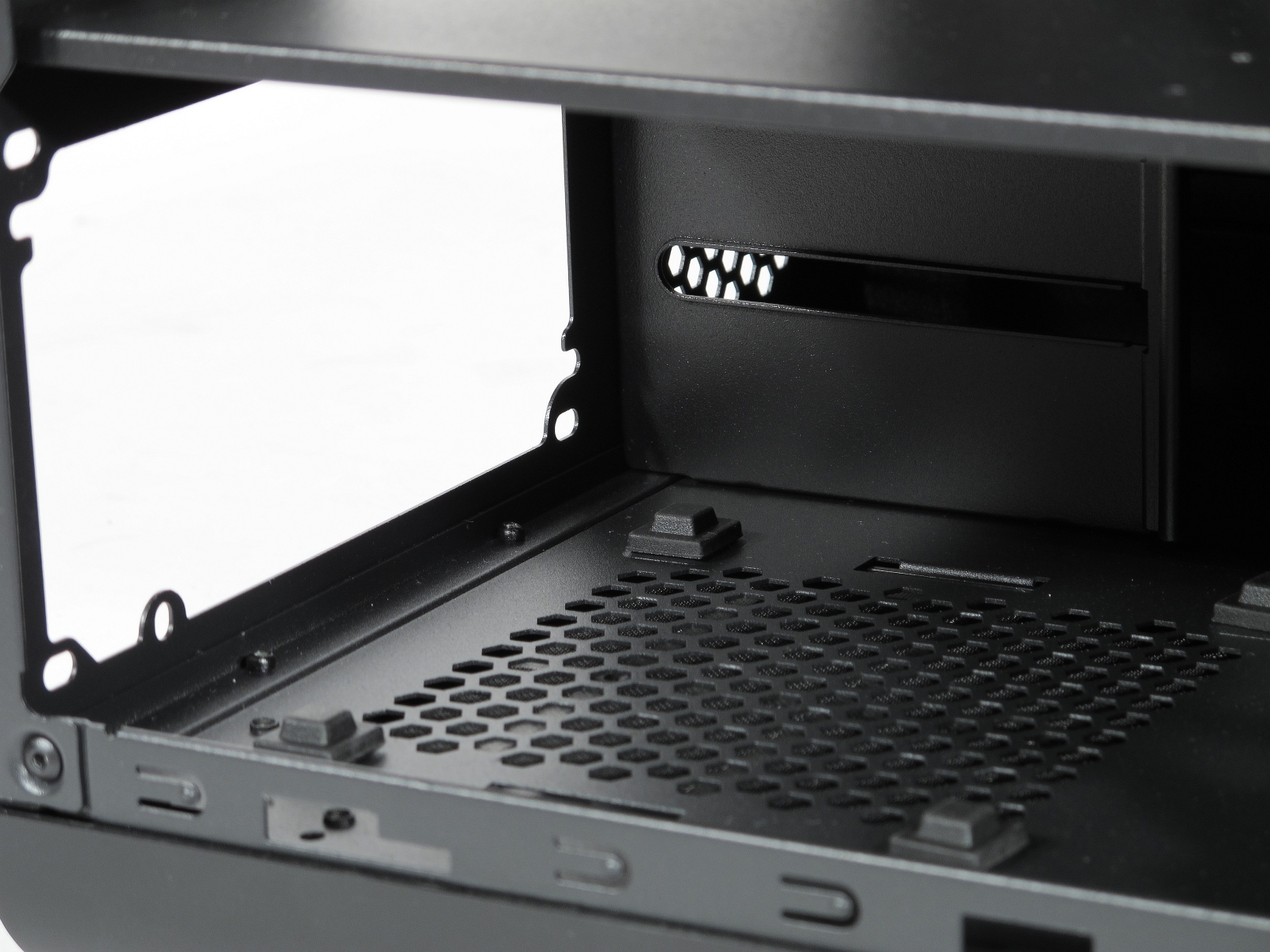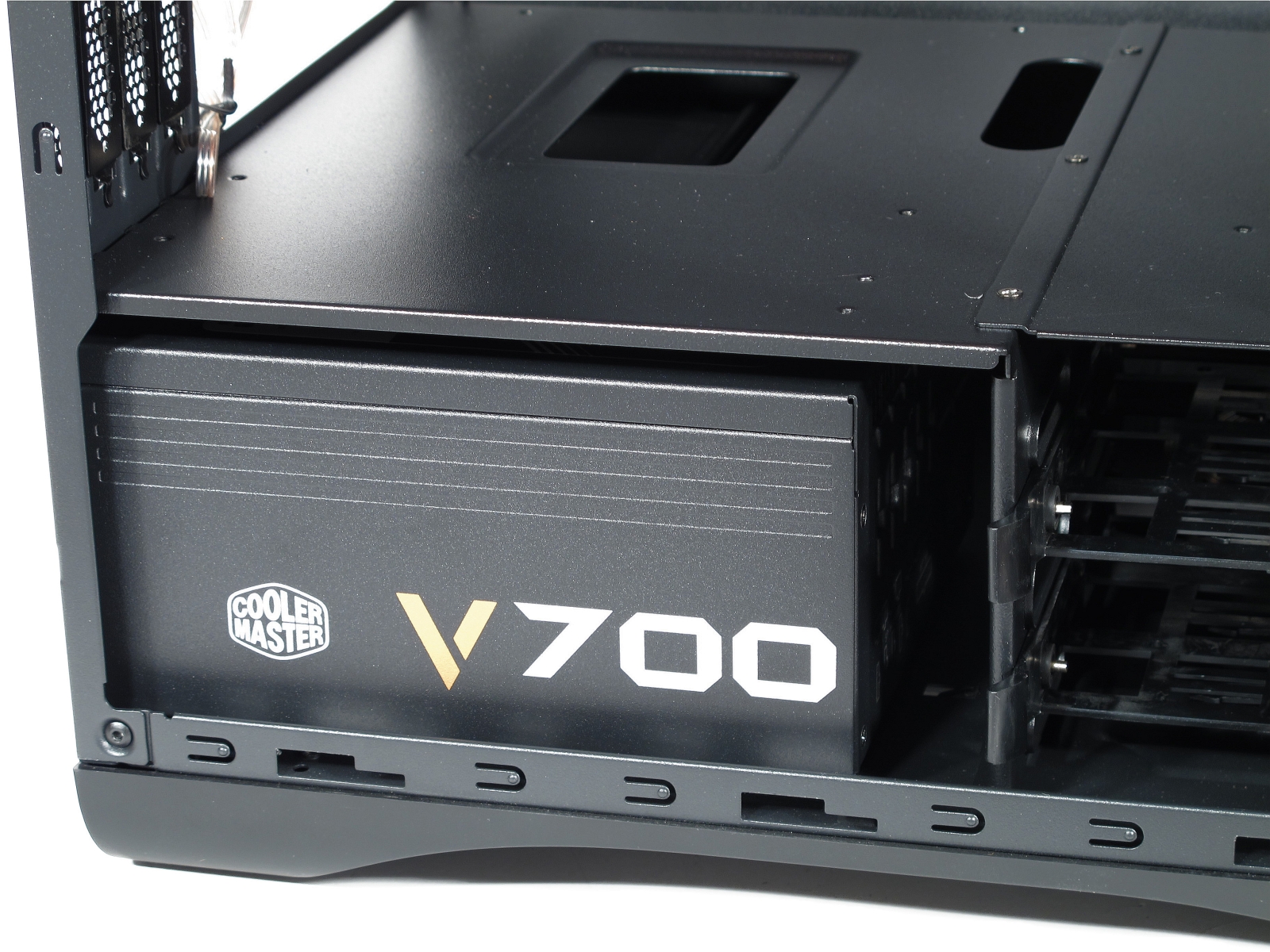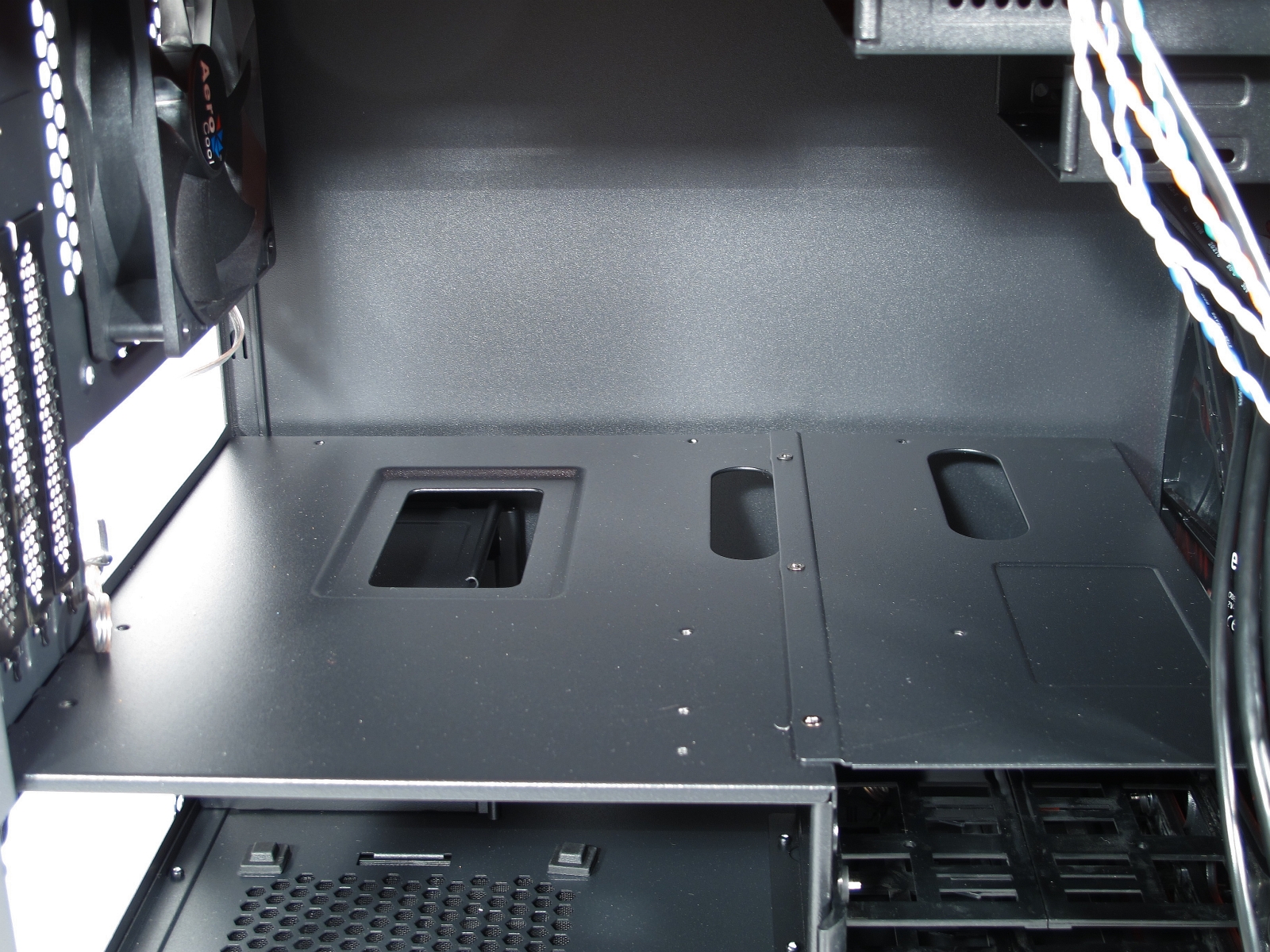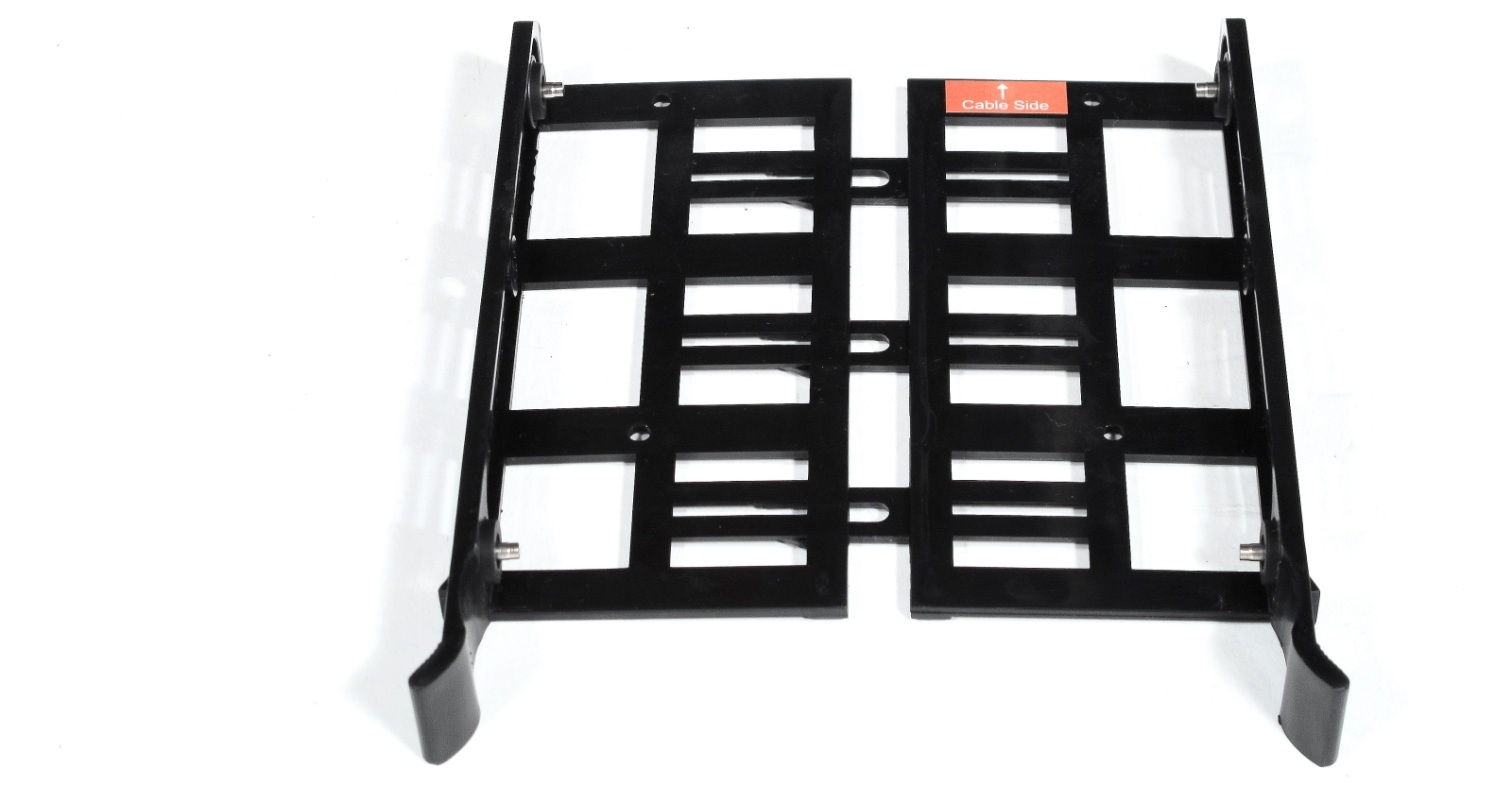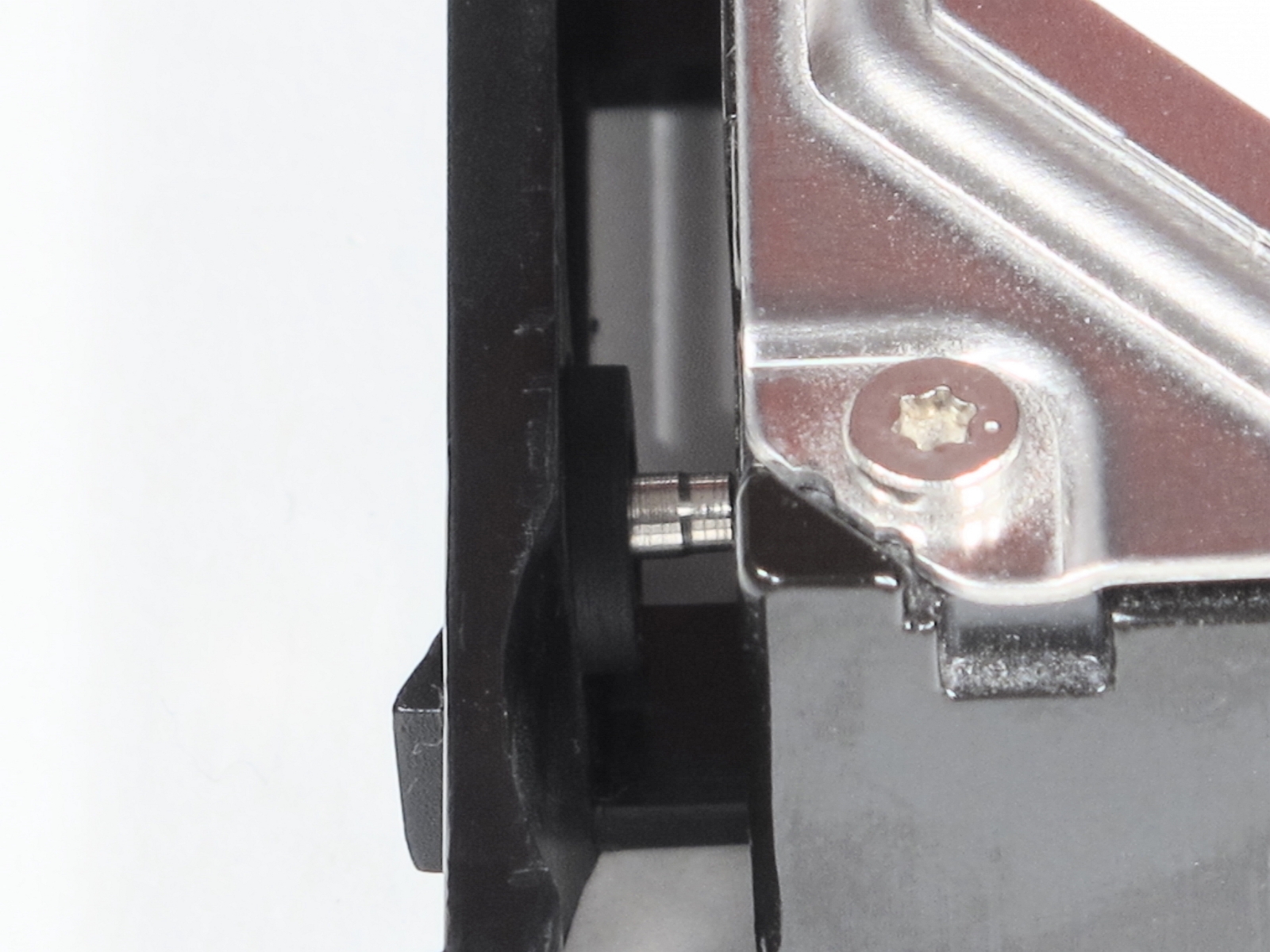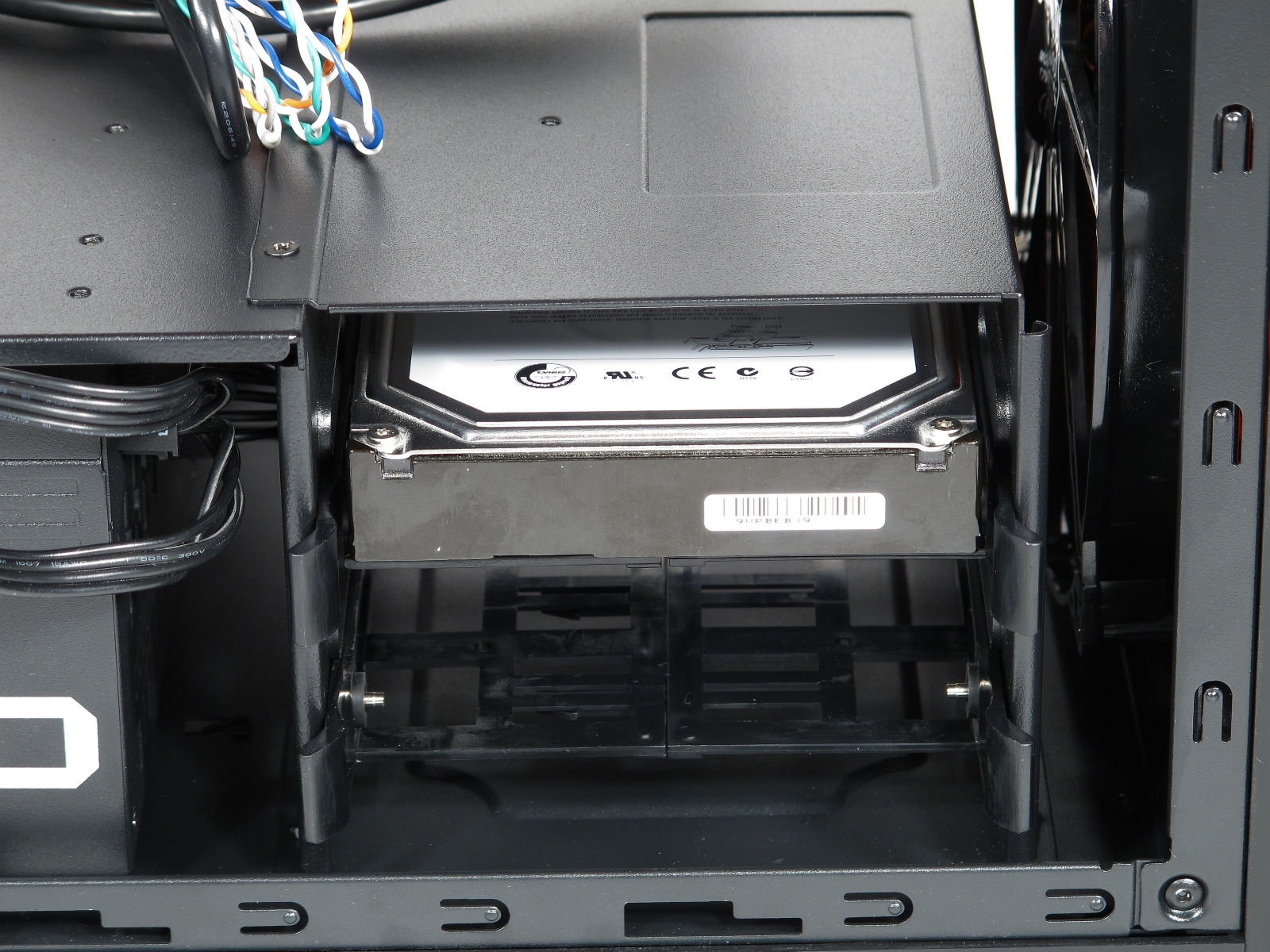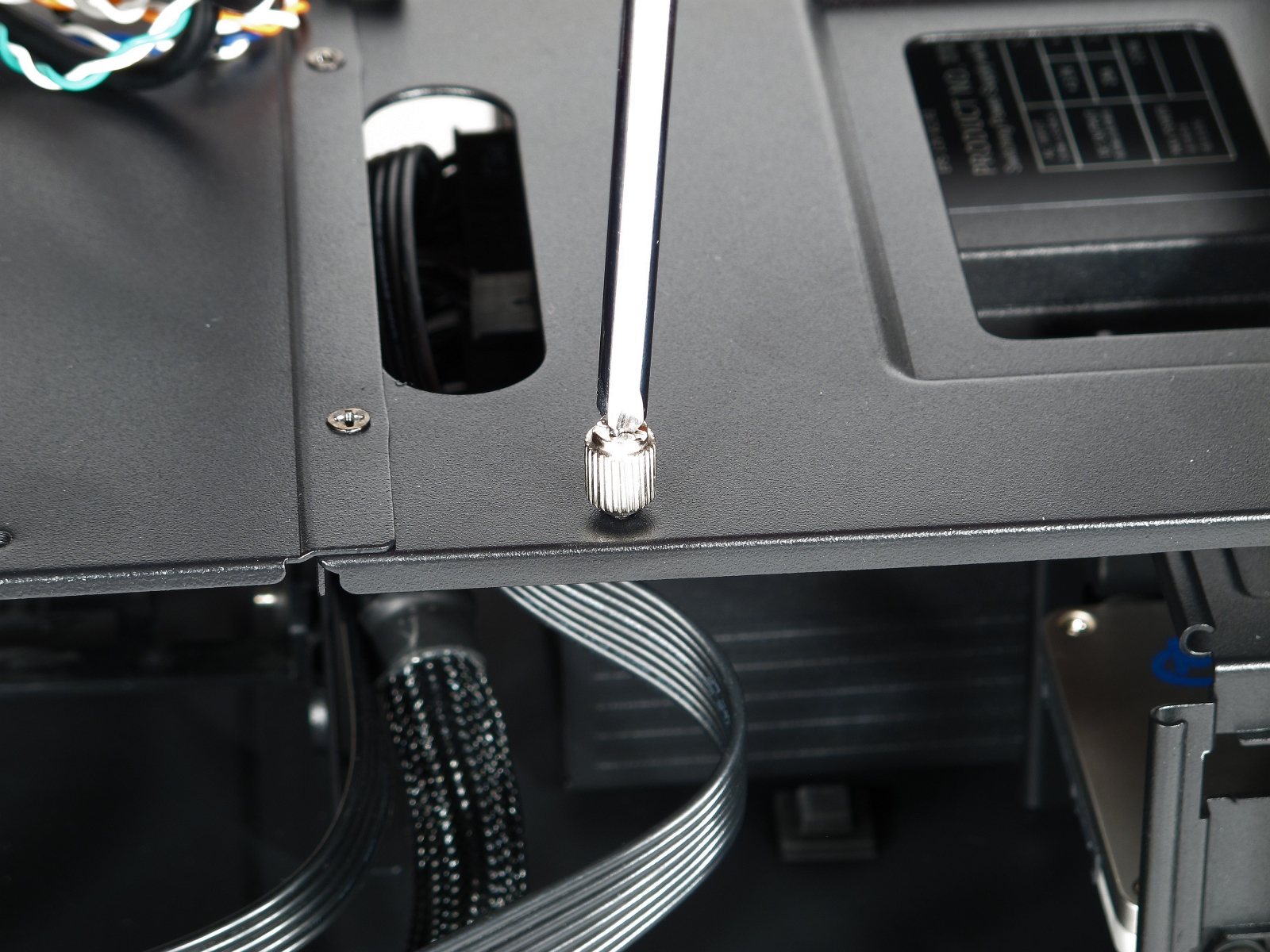Aerocool DS (Dead Silence) Case Review
Aerocool, a company best known for its flashy tower-style gaming cases, surprised us with a small and well-thought-out cube-shaped chassis with space for tall CPU coolers and long graphics cards, in spite of its size. It comes in six color combinations.
Component Installation
PSU Installation and Cable Routing
Four tall rubber feet decouple the PSU from the bottom of the case. There’s no such protection between the power supply and back of the case, but this really shouldn't be an issue.
There are 19 cm of space available for the PSU and its cables. The Cooler Master V700 we used is 17 cm-long. Factor in its modular cables, and we were looking at a tight fit. Removing the 3.5” drive cage wasn't an option, since the side closest to the power supply doubles as part of the motherboard tray.
Even in a small case like Aerocool's Dead Silence, cable management is possible. There are openings cut into the motherboard tray, as well as spaces between the edges of the tray and the side panels. You can use those cut-outs to route leads from the bottom level to the top.
Optical Drives and Hard Drives
There’s one bay each for externally-facing 5.25” and 3.5” drives. Remove the covers by pushing them out the front and secure your drives with screws.
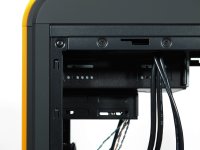
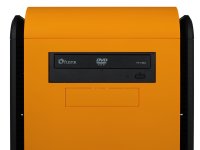
The 3.5” drive cage has a nice touch in that the sledge slightly decouples storage devices from the sides. To install a hard drive, remove the sledge, push its sides apart, place your disk onto it, and push the sides back together. Smaller 2.5” drives work too; screw them onto the sledge from the bottom. They won't enjoy the same decoupling, but if they're SSDs, they don't need that anyway.
It’s worth noting that the hard drive sledges sit very tightly in place once you slide them back into the case with a drive installed.
There's another cage specifically for 2.5" drives next to the PSU. Installation requires four screws that are attached with decoupling rubber rings and slid into the cage. It's not as secure as the 3.5" drive cage, but still plenty sufficient for SSDs.
Get Tom's Hardware's best news and in-depth reviews, straight to your inbox.
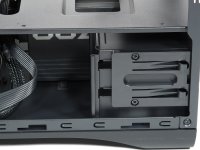

Motherboard, Graphics Card, and CPU Cooler
As with any other case, you need to screw some spacers into the tray before installing a motherboard. Aerocool gives you a small tool for this (though you might not need it, thanks to the Dead Silence's clean threads). Since the case's top cover is removable, all of the motherboard screws are easily accessible with a long screwdriver.
Aerocool's Dead Silence is compatible with CPU heat sinks up to 19 cm-tall thanks to the motherboard's horizontal position. In other words, we'd expect any modern cooler to fit in the small cube-shaped case.
Expansion card installation is tool-less. On the back of the case, a rail holds the four mesh slot covers in place. The rail, in turn, is held secured by a thumb screw.
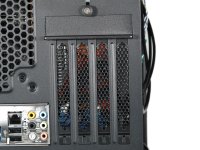

Graphics cards up to 25 cm-long fit without any modifications. Wider cards might necessitate removing the 3.5” external drive cage, though.
Current page: Component Installation
Prev Page Cooling And Dust Protection Next Page Benchmark Setup And Conditions-
DarkSable Well damn. I really like this thing, but it's just too big for a mini-ITX rig, and there are a lot better options out there for micro-ATX.Reply -
slyu9213 I agree kind of big and not sure how silent it is. But when I think of gaming I don't think of silent. Especially with some of the fans on the video cards.Reply -
DarkSable But that's why you watercool. ;)Reply
(Which this case doesn't have amazing support for. There aren't any good 200mm radiators to put in the front.) -
chumly Can you guys take a thermal reading at the point between the motherboard and PSU when the system is at load please?Reply -
Crashman Reply
Did anyone see any mention of the Bitfenix Prodigy? I used the Mini ITX version of this case in the June System Builder Marathon.11743015 said:Well damn. I really like this thing, but it's just too big for a mini-ITX rig, and there are a lot better options out there for micro-ATX. -
DarkSable Reply11743356 said:Did anyone see any mention of the Bitfenix Prodigy? I used the Mini ITX version of this case in the June System Builder Marathon.
Hang on, I'm confused. Two points.
1) I've used a prodigy before, and consider it huge for mini-ITX. It has its uses, but it's specialized... but no, I didn't see it mentioned in the article. What does that have to do with it?
2) Wait, I'm confused. Is "this case" referring to the prodigy or to this dead silence case. Does the case reviewed in the article actually have two versions, a mini-itx and a matx? If so (and the matx isn't done as poorly as the matx prodiy), that would be awesome.
-
Crashman Reply
Now I'm confused? I just looked at the pictures and spotted a case structurally identical to my Mini ITX Prodigy, except for the added width. Does the different plastic really disguise it that well?11743462 said:11743356 said:Did anyone see any mention of the Bitfenix Prodigy? I used the Mini ITX version of this case in the June System Builder Marathon.
Hang on, I'm confused. Two points.
1) I've used a prodigy before, and consider it huge for mini-ITX. It has its uses, but it's specialized... but no, I didn't see it mentioned in the article. What does that have to do with it?
2) Wait, I'm confused. Is "this case" referring to the prodigy or to this dead silence case. Does the case reviewed in the article actually have two versions, a mini-itx and a matx? If so (and the matx isn't done as poorly as the matx prodiy), that would be awesome.
Or are you thinking of the completely-revised Prodigy M, rather than the original Prodigy? Please take another look at the original Prodigy. If this case is better than the Prodigy M and I'd tested both, I'd have probably called the DS "What the Prodigy M should have been"
-
Myrkvidr I would have compared the DS to the Prodigy, but unfortunately I never received one of the Bitfenix ITS-Cases for testing...Reply -
DarkSable Reply11743552 said:Now I'm confused? I just looked at the pictures and spotted a case structurally identical to my Mini ITX Prodigy, except for the added width. Does the different plastic really disguise it that well?
Or are you thinking of the completely-revised Prodigy M, rather than the original Prodigy? Please take another look at the original Prodigy. If this case is better than the Prodigy M and I'd tested both, I'd have probably called the DS "What the Prodigy M should have been"
Okay, gotcha, yes. It's another Prodigy spinoff, I agree. I still consider it large, though. :P
